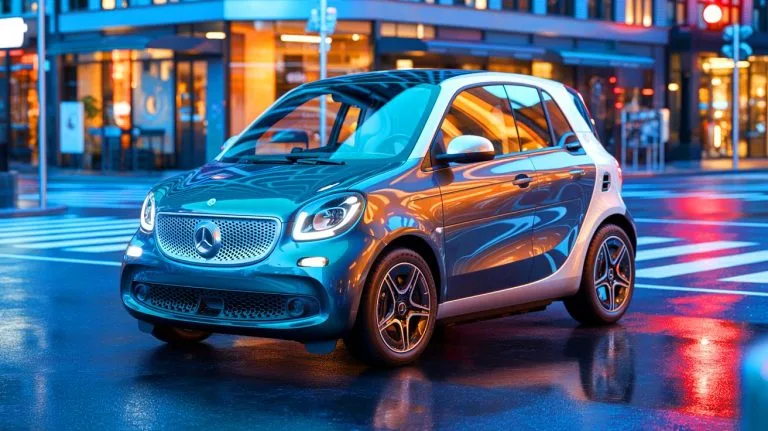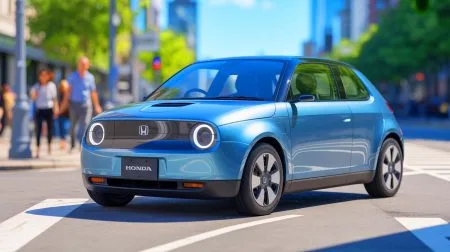| IN A NUTSHELL |
|
Smart, the iconic automotive brand known for its compact vehicles, is set to make waves once more in the automotive industry. Twenty-seven years after the debut of its revolutionary Fortwo model, Smart has announced plans to release a new two-seater electric vehicle, the #2, by late 2026. Designed by Mercedes-Benz and built on a new all-electric platform, this vehicle marks a return to the brand’s roots. With production slated to take place in China, the #2 will potentially reshape urban transportation with its compact design and electric efficiency.
Smart’s Journey Back to Compact Vehicles
Smart’s latest announcement of the #2 signifies a pivotal return to its origins of compact vehicle design. The brand first broke into the market with the Fortwo in 1998, a vehicle renowned for its ultra-compact size, measuring less than 9 feet in length. Over the years, the Fortwo evolved with advancements in design and technology, culminating in an electric version launched in 2007. Despite its compact size and impressive maneuverability in urban settings, the Fortwo faced criticism for its limited range. This upcoming model, the #2, aims to build on Smart’s heritage while addressing past shortcomings.
The #2 is expected to debut in China and Europe next year, expanding Smart’s lineup, which currently includes SUV models such as the #1, #3, and #5. By tapping into its compact car roots, Smart hopes to capture the market segment it had previously abandoned. The vehicle’s production in China aligns with Smart’s joint ownership by Mercedes-Benz and Geely, a partnership that has been in place since 2019.
Design and Features: What to Expect from the #2
The #2 promises to showcase the design prowess of Mercedes-Benz, featuring a sleek and modern aesthetic. While specific details about the vehicle’s features remain under wraps, expectations are high for an innovative design that maximizes space efficiency. The all-electric architecture is anticipated to offer improvements in range and performance, addressing the limitations of previous Smart models.
Smart’s commitment to urban mobility solutions is evident in its focus on electric vehicles. With the #2, the brand aims to balance aesthetic appeal with practical functionality. The vehicle’s compact size is expected to enhance its appeal as a city commuter, providing ease of navigation and parking in congested urban areas. The #2 could set new standards in microcompact electric vehicles, offering a blend of style, efficiency, and sustainability.
Market Dynamics and Pricing Strategy
The pricing strategy for the #2 will play a crucial role in its market success. In 2022, a previous model was priced at over £22,000 (approximately $29,630) in the UK, a figure considered steep for its segment. With the backing of Geely, there is potential for Smart to optimize production costs, which could result in more competitive pricing for the #2.
As the electric vehicle market continues to grow, Smart faces the challenge of positioning the #2 as a viable option for consumers seeking affordable and efficient urban transportation. The vehicle’s pricing will be instrumental in determining its competitiveness against other electric vehicles in the market. By offering a compelling value proposition through pricing and features, Smart could attract a new generation of urban commuters.
The Future of Urban Transportation
Smart’s introduction of the #2 comes at a time when urban centers worldwide are increasingly prioritizing sustainable transportation solutions. The shift towards electric vehicles is driven by environmental concerns and the need for efficient urban mobility. The #2’s launch aligns with these global trends, offering a glimpse into the future of urban transportation.
As cities grapple with congestion and pollution, compact electric vehicles like the #2 could play a significant role in shaping sustainable urban environments. Smart’s focus on innovative design and electric efficiency reflects a broader industry shift towards environmentally conscious mobility solutions. The success of the #2 could influence future developments in the microcompact segment, inspiring other automakers to explore similar paths.
As Smart prepares to unveil the #2, the automotive world eagerly anticipates its impact on urban transportation. Will this new model redefine the standards for compact electric vehicles, and how will it contribute to the evolution of sustainable urban mobility? The answers to these questions will shape the future of Smart and the broader automotive industry.
Did you like it? 4.3/5 (24)







Interesting move by Smart! But will it have enough range for long road trips? 🤔
Can we expect a better range from this new Smart #2 compared to the older models? 🚗
Wow, just 9 feet long? Perfect for my tiny garage! 😂
Finally, a compact car that doesn’t compromise on design! Thank you, Mercedes! 🚗
Why is production moving to China? 🤔
I’m skeptical about the production in China. Will the quality match European standards?
Thank you for the detailed article, very informative!
Looks like the perfect city car! Can’t wait to see it on the streets.
Is it true that Mercedes-Benz is designing the car? Sounds promising!
Hope the price is more competitive this time. The last model was a bit pricey. 💸
Why is Smart going back to compact cars now?
I’m skeptical about the production in China. Will it affect the quality?
Hope it’s not too expensive. The last one was a bit pricy for its size.
Is this the same size as the original Fortwo?
Will it come with autonomous driving features?
Great! Another tiny car to lose in the parking lot! 😅